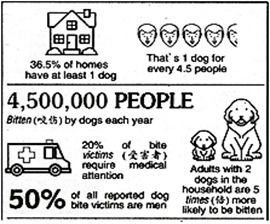
Spider Bites on Dogs: A Comprehensive Guide
When your furry friend gets a spider bite, it can be a distressing experience. Understanding the nature of these bites, their symptoms, and the appropriate treatment is crucial. This article aims to provide you with a detailed and multi-dimensional introduction to spider bites on dogs.
Common Spider Species That Bite Dogs

Several spider species are known to bite dogs. The most common ones include:
| Spider Species | Description |
|---|---|
| Black Widow | Black widows are known for their shiny, black bodies and red hourglass mark on their abdomen. |
| Brown Recluse | Brown recluse spiders have a dark brown body with a light brown or cream-colored violin-shaped mark on their back. |
| Hobo Spider | Hobo spiders are brown with a distinctive zigzag pattern on their abdomen. |
| Wolf Spider | Wolf spiders are large, robust spiders with a brownish color and a distinctive pattern on their abdomen. |
Signs and Symptoms of Spider Bites

Spider bites on dogs can cause various symptoms, which may vary depending on the spider species and the dog’s sensitivity. Common signs include:
-
Pain, redness, and swelling at the bite site
-
Loss of appetite
-
Lethargy
-
Shaking or tremors
-
Difficulty breathing
-
Seizures
Diagnosis and Treatment

Diagnosing a spider bite can be challenging, as the symptoms can be similar to those of other conditions. However, a veterinarian can usually identify a spider bite based on the dog’s history, physical examination, and laboratory tests. Treatment options include:
-
Washing the bite site with soap and water to prevent infection
-
Applying a cold compress to reduce swelling
-
Administering pain relievers, such as nonsteroidal anti-inflammatory drugs (NSAIDs)
-
Antibiotics, if an infection is present
-
Antivenom, in severe cases, especially for black widow and brown recluse bites
Prevention and Safety Measures
Preventing spider bites is essential, especially if you live in an area with a high spider population. Here are some tips to keep your dog safe:
-
Keep your yard well-maintained and free of debris, where spiders can hide
-
Inspect your dog’s bed and toys regularly for spiders
-
Use a flashlight when walking your dog at night, as this can help you spot spiders
-
Keep your dog away from areas where spiders are likely to be found, such as woodpiles, crawl spaces, and under porches
When to Seek Immediate Veterinary Care
In some cases, spider bites can be life-threatening, especially for black widow and brown recluse bites. Seek immediate veterinary care if your dog exhibits any of the following symptoms:
-
Severe pain at the bite site
-
Signs of shock, such as pale gums, rapid breathing, or weakness
-
Severe swelling or redness around the bite site
-
Difficulty breathing or swallowing
-
Seizures or other neurological symptoms
Spider bites on dogs can be a serious concern, but with proper knowledge and precautions, you can help keep your furry friend safe. Always consult with a veterinarian if you suspect your dog has been bitten by a spider.







